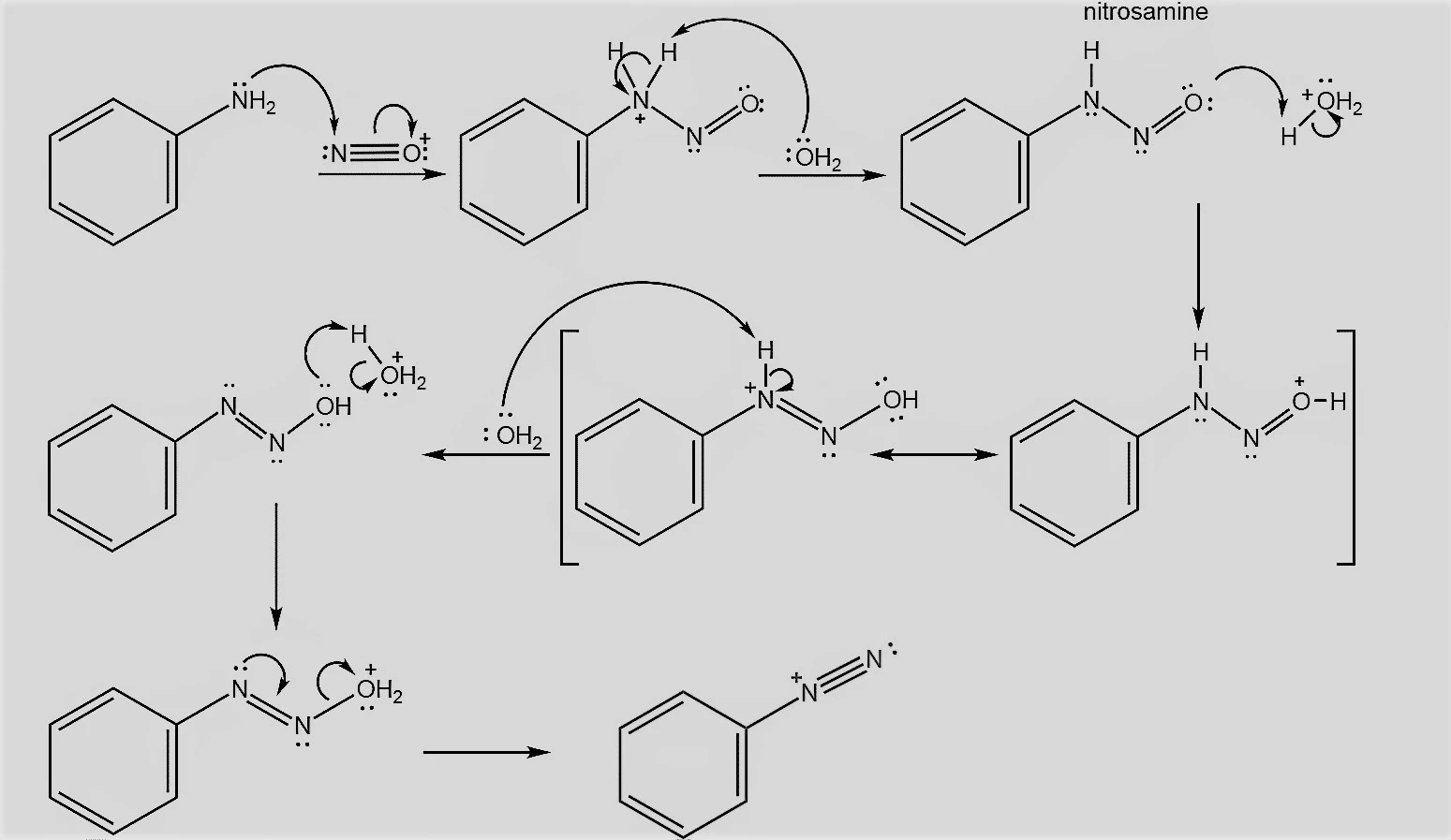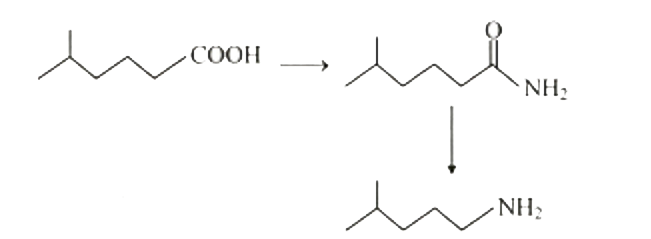Sandmeyer Reaction
Sandmeyer Reaction
There are various types of process that are being carried out in the field of organic chemistry. There are different laws that they follow and also a few processes that worth a mention. So, here let us discuss regarding the Sandmeyer reaction, the definition of sandmeyer reaction and its uses.
What is the Sandmeyer Reaction?
The Sandmeyer reaction is a type of substitution reaction that is widely used in the production of aryl halides from aryl diazonium salts. In this process, we deal with Copper salts like chloride, bromide, or iodide ions that act as a catalyst in this reaction. This reaction can also be used to perform experiments that result in the unique transformation of benzene. This transformation of benzene included the formation of include hydroxylation, trifluoromethylation, carnation, and halogenation.
This reaction was first discovered in 1884 by a swiss scientist Traugott Sandmeyer when he was performing experiments to synthesize phenylacetylene from benzene diazonium chloride and cuprous acetylide. But it was during this process that he was able to have a new and different product phenyl chloride. This Sandmeyer reaction is one of the best examples of a radical-nucleophilic aromatic substitution. This is one of the most useful tools by which amino group on an aromatic ring can be replaced with different substituents. in this process, the amino group that is attached to the aromatic ring gets converted into a diazonium salt. This, in turn, gets converted into various other functional groups.
Sandmeyer Reaction Mechanism
As we can see that this reaction is most useful to be used on amino acids as well. But there is a definite mechanism that it follows. The Sandmeyer reaction always follows a free radical mechanism with the formation of halides.

It is usually a two-step process where the synthesis of aryl halides from primary aryl amines involves the formation of diazonium salts—subsequently, the transformation of diazo intermediates into aryl halides (displacement with a nucleophile). So, the nucleophile here can be a halide anion, cyanide, water, etc. This reaction starts with the transfer of a single electron from the copper to the diazonium. This leads to the formation of a non-participating diazo radical as well as copper (II) halide. Subsequently in the process, a molecule of nitrogen gas is then released by the diazo radical to give aryl radical, which then reacts with the copper (II) halide to restore the catalyst. After the reaction ends, we can obtain aryl halide as the resultant.
We can also see that when the reaction is being carried out, there is the formation of nitrosonium ion. In this experiment that we perform, sodium nitrite and acid to form nitrous acid are taken. In the next step, two protonation steps are performed where one equivalent of water is removed. This results in the production of nitrosonium ion. So, in here, an electrophile when it is reacted further with an aromatic or heterocyclic amine. And so finally, the diazonium salt is formed wherein the temperatures are maintained between 25-30oC.

Another important point here is the formation of Benzenediazonium ion following the process of the same Sandmeyer reaction mechanism. Given here is the diagram for a clearer understanding

So, with the study of the above, it has become quite clear that this Sandmeyer reaction holds greater value and importance in organic chemistry. So, let us first try to jot down a few important points.
- This is one of the steps that is taken to study a new branch of chemistry, aromatic chemistry. This kind of reaction can be used to generate substitution patterns that are sometimes not possible to achieve by direct substitution.
- In this, the main process starts with the primary arylamine being diazotized to create an aryl diazonium salt which is further reacted with a halide ion to produce the desired aryl halide product.
- This process follows a free radical system. So, in this reaction, a free electron-transfer-mechanism takes place.
- This reaction is complimentary to electrophilic aromatic substitution as it follows the modern method of wide synthetic applicability.
Related Videos:
- Carbylamine Reaction
- Balz-Schiemann reaction
- Hoffmann Bromamide Degradation Reaction
- Coupling Reaction
- Ammonolysis of Alkyl Halides
Uses of Sandmeyer Reaction
Listed below are a few of the most common use of sandmeyer reaction in the field of chemistry.
- This reaction is very commonly used in hydroxylation to convert aryl amines to phenols leading to the formation of an aryl diazonium salt. This process helps in the segregation of important salts
- This process helps in the formulation of aryl compounds during the process of trifluoromethylation. These compounds thus formed, inherit unique chemical properties with a wide variety of practical applications.
- This reaction is primarily used for the formation of benzonitriles through the process of cyanation. This reaction mechanism also takes place during the synthesis of neoamphimedine, a chemical compound that targets topoisomerase II as an anti-cancer drug.
- This reaction leads to the creation of halides. The primary solvent used in this reaction are diiodomethane to synthesize aryl iodides, bromoform to synthesize aryl bromides, chloroform to synthesize aryl chlorides.
We are now in a position to define this reaction process; we are also able to understand how important this process in modern chemistry. This reaction process is also considered a doorway to a new branch of chemistry known as the aromatic chemistry. One of the most important attributes that we can see in this reaction is that it leads to the formation of neoamphimedine, a drug that can be used as an anti-cancer drug.
This Sandmeyer reaction helps us to obtain important halides and ions that are important for another chemical compound formation as well. One of the most important things that need to be noted here that this Sandmeyer reaction takes place in the presence of copper salt taken as a catalyst.
Important Chapters:



Similar Questions
Consider the following conversion :

Amongst the following, how many methods can be used in any one of steps involved in the mentioned conversion?
i. Hoffmann bromamide degradation
ii. Gabriel phthalimide synthesis
iii. Sandmeyer reaction
iv. Clemmensen reduction
v. Mendius reductionView SolutionMatch the catalyst given in Column I with the processes given in Column II.
 View Solution
View Solution
Knowledge Check
- Question 1 - Select One
Sandmeyer's reaction is used to prepane
Amethyl benzeneBhalobenzeneCp-xyleneDnitrobenzene - Question 2 - Select One or More
Which of the following are examples of Sandmeyer's reaction?
AC6H5N+2ClCuCl−−→C6H5ClBC6H5N+2ClCu2(CN)2−−−−−−→C6H5CNCC6H5N+2ClNaNO2/Cu/Δ−−−−−−−−−→C6H5NO2DC6H5N+2ClKl/Δ−−−→C6H5I - Question 3 - Select One
Which of the following is not an example of Sandmeyer’s reaction ?
AC6H5+N2−ClCuCl−−→C6H5ClBC6H5+N2−ClCuBr−−→C6H5BrCC6H5+N2−ClCuCN/KCN−−−−−−−−→C6H5CNDC6H5+N2−ClKI/warm−−−−→C6H5I
Write a note on Sandmeyer's reaction
View SolutionWrite a note on Sandmeyer's reaction
View SolutionWrite a short note on Sandmeyer's reaction .
View SolutionWhich of the following is involved in sandmeyer's reaction?
View SolutionWhich of the following is involved in Sandmeyer's reaction?
View Solution

